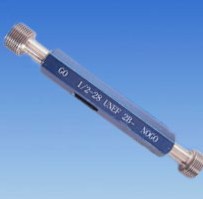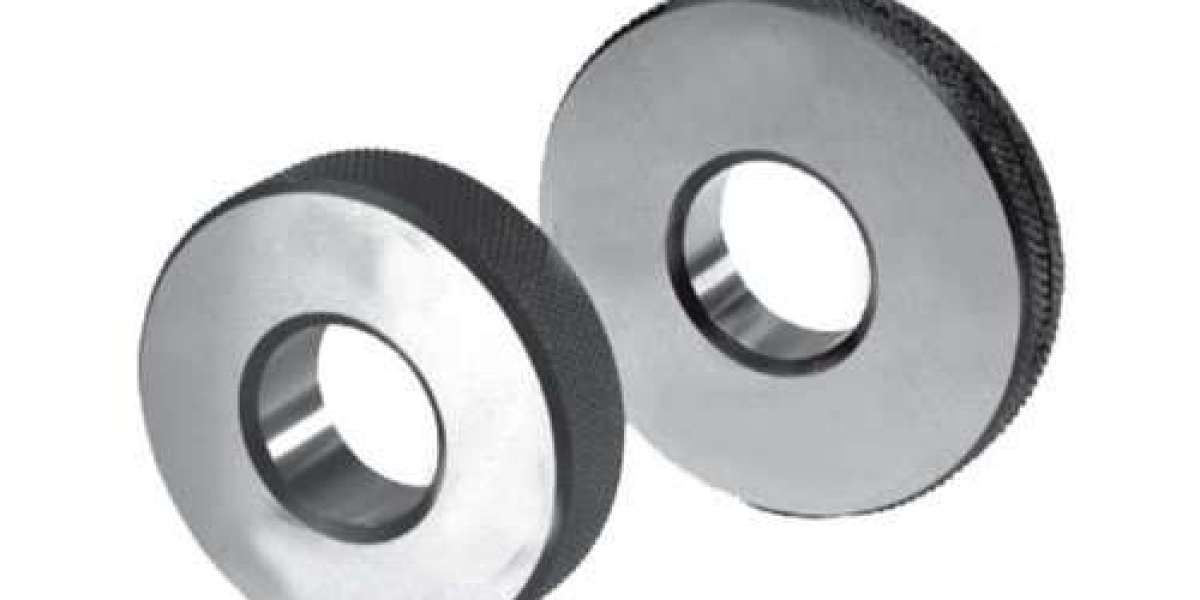When it comes to ensuring the accuracy and reliability of threaded components, the selection of the right thread gages is crucial. UNC (Unified National Coarse) thread gages are widely used in various industries for inspecting the quality and precision of threaded parts. Choosing the appropriate UNC thread gages for your application can significantly impact the performance and longevity of your products. This guest post will explore the different types of UNC thread gages, their applications, and the key factors to consider when selecting the right gages for your specific needs.
Understanding UNC Thread Gages
Gaugestools Unc thread gauges are designed to meet industry standards and ensure optimal performance. Trust Gaugestools to provide you with reliable tools that help you get the job done efficiently. Upgrade your equipment with our top-notch Unc thread gauges and experience superior results in your projects.
UNC thread gages are tools used to measure the pitch diameter and functional dimensions of UNC threads. These gages help ensure that threaded components fit together correctly, reducing the risk of mechanical failure and ensuring optimal performance. UNC threads are characterized by their coarse pitch and are commonly used in various applications, including automotive, aerospace, and machinery manufacturing.

There are several types of UNC thread gages, including:
Go/No-Go Gages: These gages consist of two ends—one marked “Go” and the other “No-Go.” The “Go” end should fit onto the thread, while the “No-Go” end should not. This simple design allows for quick and efficient inspections.
Ring Gages: Ring gages are cylindrical gages used to measure external threads. They are typically used for checking the dimensions of bolts and other threaded components.
Plug Gages: Plug gages are used to measure internal threads. They are inserted into a threaded hole to verify that the dimensions meet the required specifications.
Thread Calipers: These precision instruments provide a direct measurement of the thread's pitch diameter and other key dimensions.
Key Factors to Consider When Choosing UNC Thread Gages
Selecting the right UNC thread gages for your application involves several important factors. Here are some key considerations to keep in mind:
1. Thread Size and Pitch
The first step in selecting UNC thread gages is to determine the specific thread size and pitch you are working with. UNC threads are available in a variety of sizes, ranging from small diameters for delicate applications to larger sizes for heavy-duty uses. Each size has a specific pitch that dictates how closely the threads are spaced.
It’s essential to choose gages that match the exact specifications of your threads. This ensures accurate measurements and proper fitting of threaded components. Consult the Unified Thread Standard (UTS) chart to identify the correct size and pitch for your application.
2. Type of Gage
The type of UNC thread gage you choose will depend on the specific application and the nature of the threaded components you are inspecting. Here are some common applications for different types of gages:
Go/No-Go Gages: Ideal for quick inspections to verify whether a threaded component meets the required tolerances. These gages are commonly used in high-volume manufacturing environments.
Ring Gages: Best suited for measuring external threads, such as those found on bolts and screws. Ring gages provide a simple and efficient way to check the dimensions of threaded parts.
Plug Gages: Used for internal thread measurements, such as those found in nuts and other threaded holes. Plug gages are essential for ensuring proper fit and function in assembly applications.
Thread Calipers: These are ideal for precise measurements of pitch diameter and thread height, making them suitable for applications where accuracy is critical.
3. Material and Durability
The material of the thread gages is another crucial factor to consider. Gages are commonly made from high-quality tool steel or stainless steel to provide durability and resistance to wear. When selecting gages, ensure that they are manufactured from materials that can withstand the specific conditions of your application, such as exposure to moisture, chemicals, or extreme temperatures.
Investing in high-quality gages will not only ensure accurate measurements but also extend the life of the tools, reducing the need for frequent replacements.
4. Tolerances and Standards
Thread gages must meet specific tolerances and standards to ensure accurate measurements and reliable performance. The American National Standards Institute (ANSI) and the International Organization for Standardization (ISO) set the standards for thread gages.
When selecting UNC thread gages, verify that they comply with the relevant industry standards and tolerances. This ensures that your measurements are consistent with established benchmarks and that your threaded components will perform reliably in their intended applications.
5. Calibration and Maintenance
Regular calibration and maintenance of thread gages are essential for ensuring their accuracy and reliability. Before using any gage, it’s important to calibrate it against a known standard to ensure that it provides accurate measurements.
Additionally, consider the ease of maintenance when selecting gages. Some gages may require special handling or storage conditions to prevent wear or damage. Choose gages that are easy to clean and maintain to prolong their lifespan and maintain measurement accuracy.
6. Cost and Budget
While quality is paramount when selecting thread gages, it’s also essential to consider your budget. Thread gages come in a wide range of prices, depending on factors such as material, precision, and brand reputation.
When evaluating cost, consider the long-term value of the gages. Investing in high-quality gages may result in higher initial costs, but their durability and accuracy can save you money in the long run by reducing the frequency of replacements and minimizing measurement errors.
7. Supplier Reputation and Support
Finally, consider the reputation of the supplier or manufacturer when selecting UNC thread gages. A reputable supplier will provide high-quality gages that meet industry standards and offer reliable customer support.
Look for suppliers that provide detailed product specifications, technical support, and calibration services. This ensures that you have access to the resources you need to maintain the accuracy and reliability of your gages.
Conclusion
Choosing the right UNC thread gages for your application is crucial for ensuring the accuracy and reliability of your threaded components. By considering factors such as thread size, gage type, material, tolerances, calibration, cost, and supplier reputation, you can make an informed decision that meets your specific needs.
Investing in high-quality UNC thread gages will not only enhance the performance of your products but also contribute to greater efficiency and reliability in your manufacturing processes. With the right gages in hand, you can ensure that your threaded components fit together seamlessly, minimizing the risk of mechanical failure and maximizing the longevity of your applications. Upgrade your equipment with our top-notch Unc thread gages and experience superior results in your projects. Order now and elevate your precision work!



